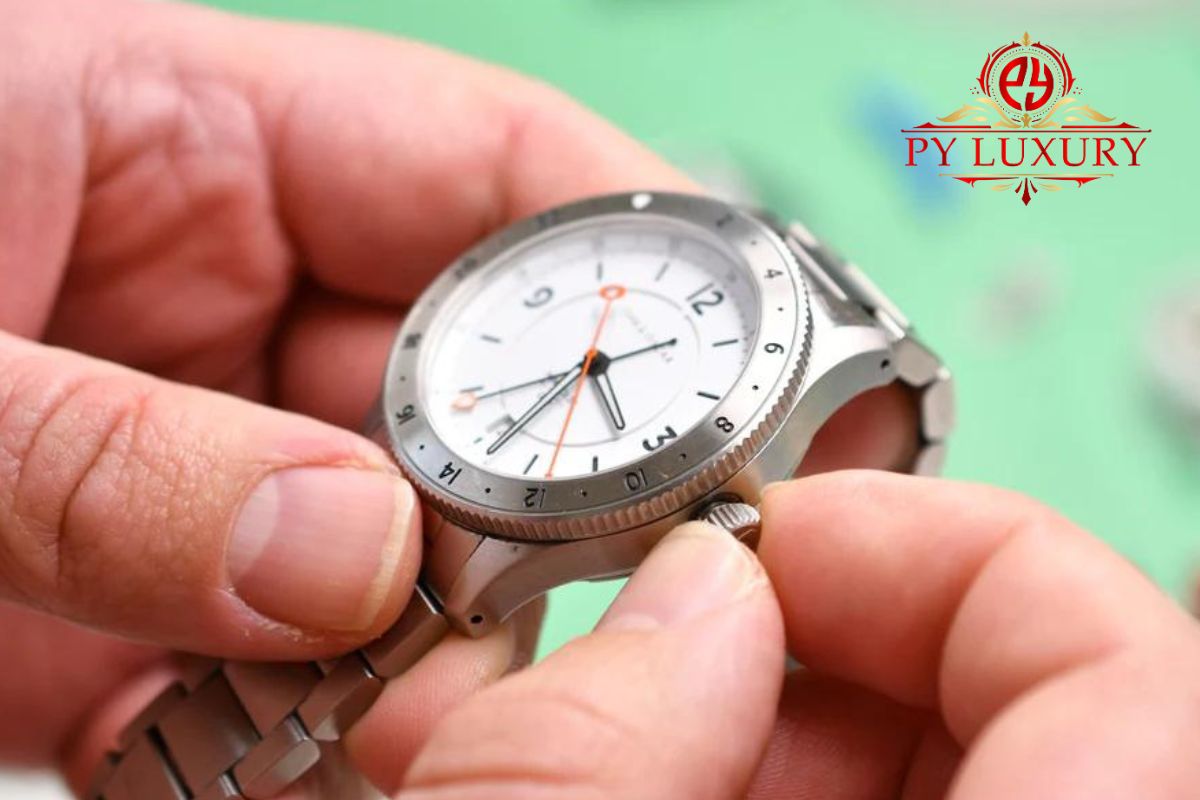Blog about Watches, Jewelry & Bags, Watch Blog
Tips to Care for Automatic Watches
Automatic watches are renowned for their craftsmanship and mechanical precision, requiring minimal effort to maintain their functionality. However, like all fine machinery, they need proper care to ensure longevity and accuracy. In this article, we will guide you through essential tips to care for automatic watches, ensuring your timepiece remains in optimal condition for years to come.
1. Winding and Power Reserve

Automatic watches are powered by the natural motion of your wrist. Regularly wearing your watch for at least 8 hours a day ensures the mainspring remains wound, storing energy in the power reserve. This is crucial for maintaining time accuracy. If you rotate between multiple watches, consider investing in a high-quality watch winder to prevent your automatic watch from stopping when not in use. A watch winder simulates wrist movement, keeping the mainspring wound without manual intervention. This is particularly beneficial for intricate watches with complex features such as moon phase, annual calendar, or perpetual calendar, which can be tedious to reset.
Expert Tip: Check your watch’s power reserve specification, as some watches can store energy for up to 72 hours or more.
2. Proper Handling
Automatic watches house delicate mechanical components that can be affected by sudden impact or excessive movement. Always handle your watch with care to prevent unnecessary wear on the movement. Avoid shaking, dropping, or exposing it to high vibrations, which may damage the internal parts. Additionally, never adjust the time or date between 9 PM and 3 AM. During this period, the date change mechanism is engaged, and manual adjustments can cause damage.
Pro Advice: Always consult the watch’s manual for guidance on handling the specific model, as different brands may have slight variations in movement design.
3. Water and Moisture Resistance
Understanding your watch’s water resistance rating is critical. Automatic watches come with varying degrees of water resistance, from splash-proof models to those designed for deep-sea diving. Always refer to the manufacturer’s instructions for the water resistance rating and avoid exposing your watch to water if it’s not designed for it. For instance, a 50-meter water resistance rating means the watch is suitable for daily use, such as hand washing, but not for swimming or diving.
For more details on water resistance ratings and what they mean, visit Wikipedia.
Important Note: Even if a watch is labeled water-resistant, seals and gaskets can wear out over time. It’s essential to have the watch’s water resistance checked during regular service intervals.
4. Cleaning and Polishing

Maintaining the external beauty of your automatic watch is just as important as preserving its internal mechanics. Regular cleaning with a soft, lint-free cloth will help remove dust, dirt, and fingerprints from the case, bracelet, and crystal. Be cautious when cleaning polished surfaces or gold-plated elements, as harsh cleaning products or abrasives can scratch or tarnish the finish. For leather straps, use a specialized leather cleaner and conditioner to maintain flexibility and prevent cracking over time.
Pro Advice: When cleaning, use a soft toothbrush to gently scrub between bracelet links or on textured surfaces. Avoid submerging leather straps in water, as it can weaken the material.
5. Service and Maintenance

Like all mechanical devices, automatic watches require regular servicing to maintain their precision and longevity. Typically, a service is recommended every 3 to 5 years, but this may vary depending on the brand and complexity of the movement. During servicing, a professional watchmaker will clean, lubricate, and adjust the movement, ensuring all parts function correctly. They will also check the seals and gaskets for water resistance. Neglecting regular service can result in inaccurate timekeeping, wear on the movement, and a shortened lifespan for the watch.
Expert Insight: Always choose authorized service centers or watchmakers with expertise in your brand to ensure proper care.
6. Storage

Proper storage of your automatic watch is essential when not in use. Invest in a good quality watch box with a soft interior to protect the watch from dust, light, and moisture. Avoid placing the watch near magnetic sources, such as smartphones, speakers, or even some handbags with magnetic clasps, as they can interfere with the watch’s movement, leading to inaccurate timekeeping. Additionally, use a pillow or cushion to maintain the bracelet or strap’s shape and avoid tension in the materials.
Pro Advice: If you own several automatic watches, a rotating watch box with multiple winders can keep your collection in peak condition.
7. Avoid Temperature Extremes

Exposure to extreme heat or cold can damage the oils inside the watch, affecting its performance. In freezing conditions, the lubricants may thicken, while in excessive heat, they can thin out, leading to inaccurate timekeeping or even damage to the movement. Always avoid placing your watch in direct sunlight for prolonged periods or exposing it to rapid temperature changes, such as moving from a hot car to an air-conditioned room.
Expert Tip: Try to store your watch in a climate-controlled environment, especially if it has valuable materials like gold or a leather strap that can be sensitive to temperature changes.
Conclusion
Caring for your automatic watch is a commitment to preserving its beauty, functionality, and heritage. Regular maintenance, proper handling, and awareness of your watch’s specific needs will ensure it remains a trusted companion for years to come. At Py-Luxury, we understand the importance of watch care and offer a range of accessories and services to keep your timepieces in perfect condition. Explore our collection of watch winders, cleaning kits, and professional servicing options.


